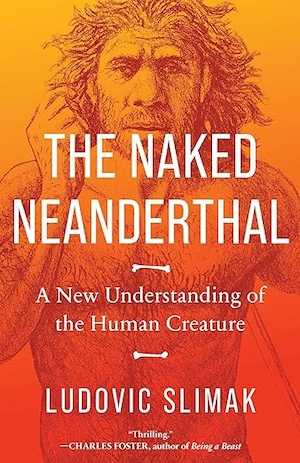By Benjamin Franklin Martin
Neanderthals were the hominids that in small numbers first inhabited Eurasia, at least 400,000 years ago. About 350,000 years later, large bands of another hominid, homo sapiens (modern humans), began moving out of Africa, through the middle east and onto the Eurasian continent. The encounter of these two versions of humanity lasted less than 10,000 years, and when it was over, Neanderthals had disappeared completely.
According to various contemporary articles in newspapers and magazines, Neanderthals were a lot like us homo sapiens, maybe not our brothers but very like our cousins, and certainly not knuckle-dragging brutish “cave men” as originally portrayed after their discovery in 1856 and even as late as the 1990s. Neanderthals are now said to have produced sophisticated tools, to have cared for their sick and infirm occasionally for many years, and to have been capable of “symbolic thought,” marking cave walls, creating ornaments, burying their dead, and engaging in ritual ceremonies. Most fascinating of all, we were “kissing cousins,” advances in DNA research revealing that Neanderthals and homo sapiens interbred and that traces of Neanderthal DNA remain in the current human genome.
One preeminent paleoanthropologist, Ludovic Slimak, from the University of Toulouse, who has spent more than three decades hunting and sifting the remains of Neanderthal existence, above all at Grotte Mandrin in the Rhône valley, objects strenuously. Neanderthals were not, he insists, “ersatz Sapiens.” According to Slimak, “Not only are they different, but in many mental aspects they overshadow Sapiens.” And when we, as homo sapiens, confronted Neanderthals, we recognized them as the “other” and committed what amounted to humanity’s first genocide.
The artistic productions of homo sapiens are readily apprehensible even in the first parietal representations of animals: “from Lascaux to Guernica is just a single step. . . a single homogeneous art.” After touring the cave paintings at Altamira, Picasso exclaimed, “They invented everything!” By contrast, the parallel or crisscrossing marks, the doodles, and the occasional hand prints left on cave walls by Neanderthals resist any interpretation. The ornaments and jewelry from shells, stones, or feathers created by the hands of homo sapiens are often elaborate and reflect careful composition. Of the same shells, stones, and feathers found among Neanderthal remains, the marks of deliberate manufacture are absent. Paleoanthropologists “haven’t in fact found the first hole of the first Neanderthal ornament,” Slimak writes. Both Neanderthals and homo sapiens buried their dead—sometimes—and based upon markings on the bones, may have—sometimes—celebrated rituals about death. But animal behaviorists claim that elephants, horses, badgers, and maybe other species also have peculiar reactions to deaths of their own, and many species suffer grief.
Having offered these comparisons, Slimak dismisses the assertion of “cousinship” with this disdainful comment: “Take one pinch of burial, add three pinches of bodily adornment, a soupçon of movable art, a smidgen of rock art, leave to simmer for 100 millennia and you end up with a tasty modern human ready to express deep symbolic thought.”
And of “kissing cousins”: The same palaeogenetics that prove the—occasional—interbreeding of Neanderthals with homo sapiens demonstrate that the gene flow was in a single direction and non-reciprocal, in favor of homo sapiens, meaning that homo sapiens males mated with Neanderthal women and not vice versa—at least not successfully. Slimak recaps, “I take your sister but I don’t give you mine.” Neanderthals lived in small groups of 15 to 20; homo sapiens arrived in much larger numbers. The total population of Neanderthals throughout Eurasia at any date was likely no more than 100,000; homo sapiens soon surpassed that by many times. The weapon of Neanderthals was the lance, requiring attack at close quarters. The weapons of homo sapiens were the bow and arrow and the thrown spear, permitting attack at a distance. We will probably never know exactly what happened, but Slimak is convinced that “the appearance of modern humans was not just the principal factor but, unfortunately, the direct and unique cause of the extinction of Neanderthal populations and their traditional knowledge.”
What was the distinguishing factor that rendered Neanderthals the “other” for homo sapiens, eliminating any chance for coexistence? Paleoanthropologists easily distinguish a flint carved by Neanderthals from a flint carved by homo sapiens: each Neanderthal flint is different; the homo sapiens flints all look the same. Or as Slimak explains: “No two Mousterian [Neanderthal] tools are alike. . . . This was a culture without normalization, without the quasi-industrial character that defines both prehistoric sapiens cultures and modern-day societies. . . . Each Neanderthal tool. . . plays with the natural form of the raw material, with the texture of the rock, with its colours, with its touch. There is a balance, an absolute perfection.”
When explaining the implications of this clue, Slimak is ambiguous but posits competing civilizations, one based on intuitive individualism, the other on practical collectivism. Neanderthals were endowed with a “total ongoing creativity” that separated their view of the world from the standardization of homo sapiens. Compromise between such stark paradigms was impossible. Similar examples from history spring immediately to mind, especially of colonization following incursion. The results have never been edifying. Slimak is benign when he writes, “so the implication is that Neanderthals did not die a beautiful death.”
Benjamin Franklin Martin (ΦΒΚ, Davidson College, 1969) is Price Professor of History Emeritus at Louisiana State University; his most recent book is Roger Martin du Gard and Maumort: The Nobel Laureate and His Unfinished Creation (2017).




